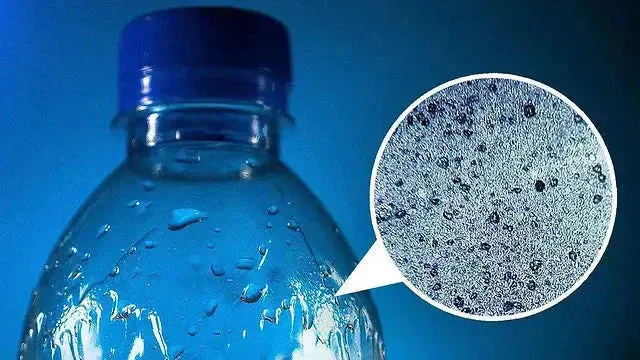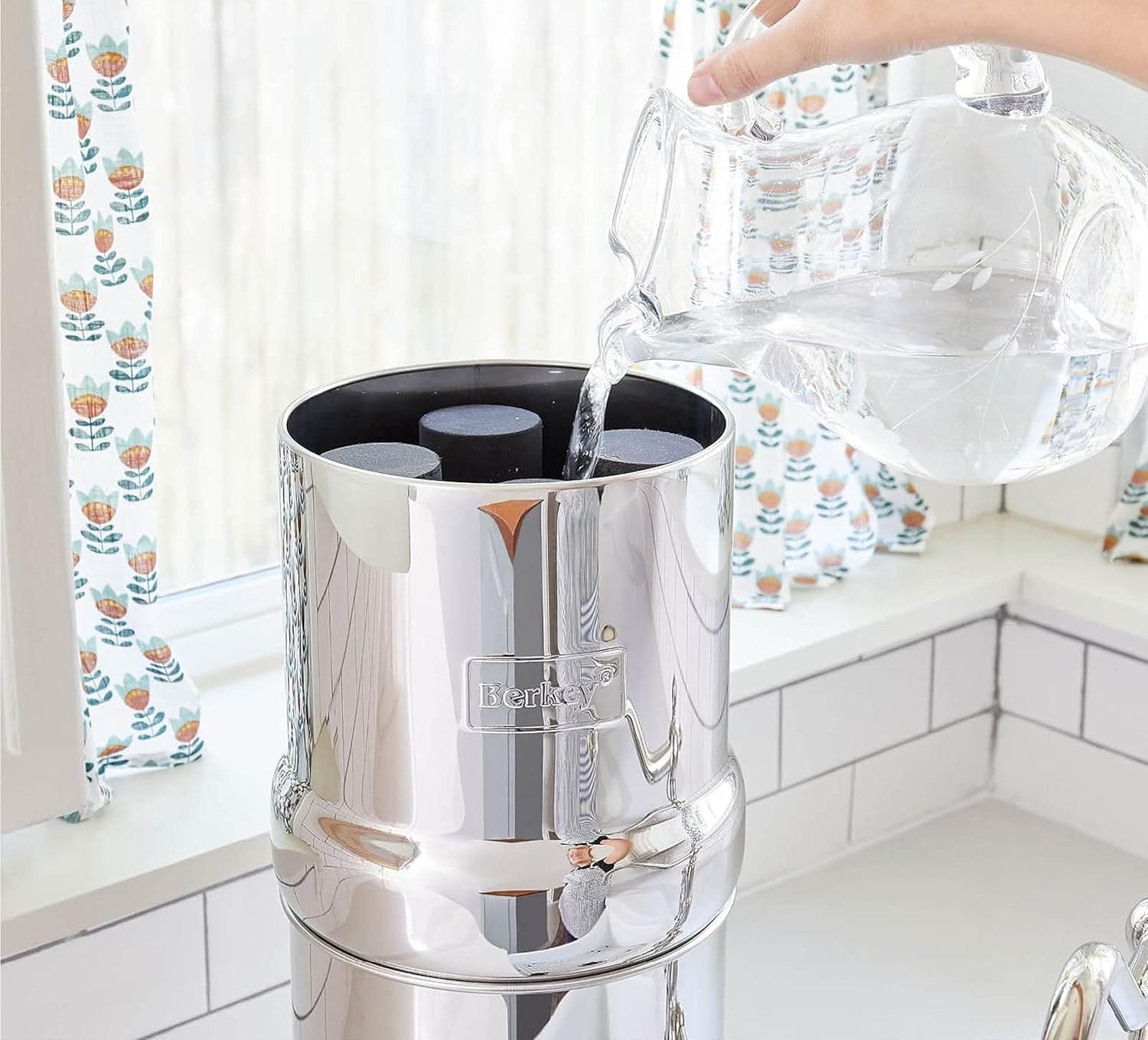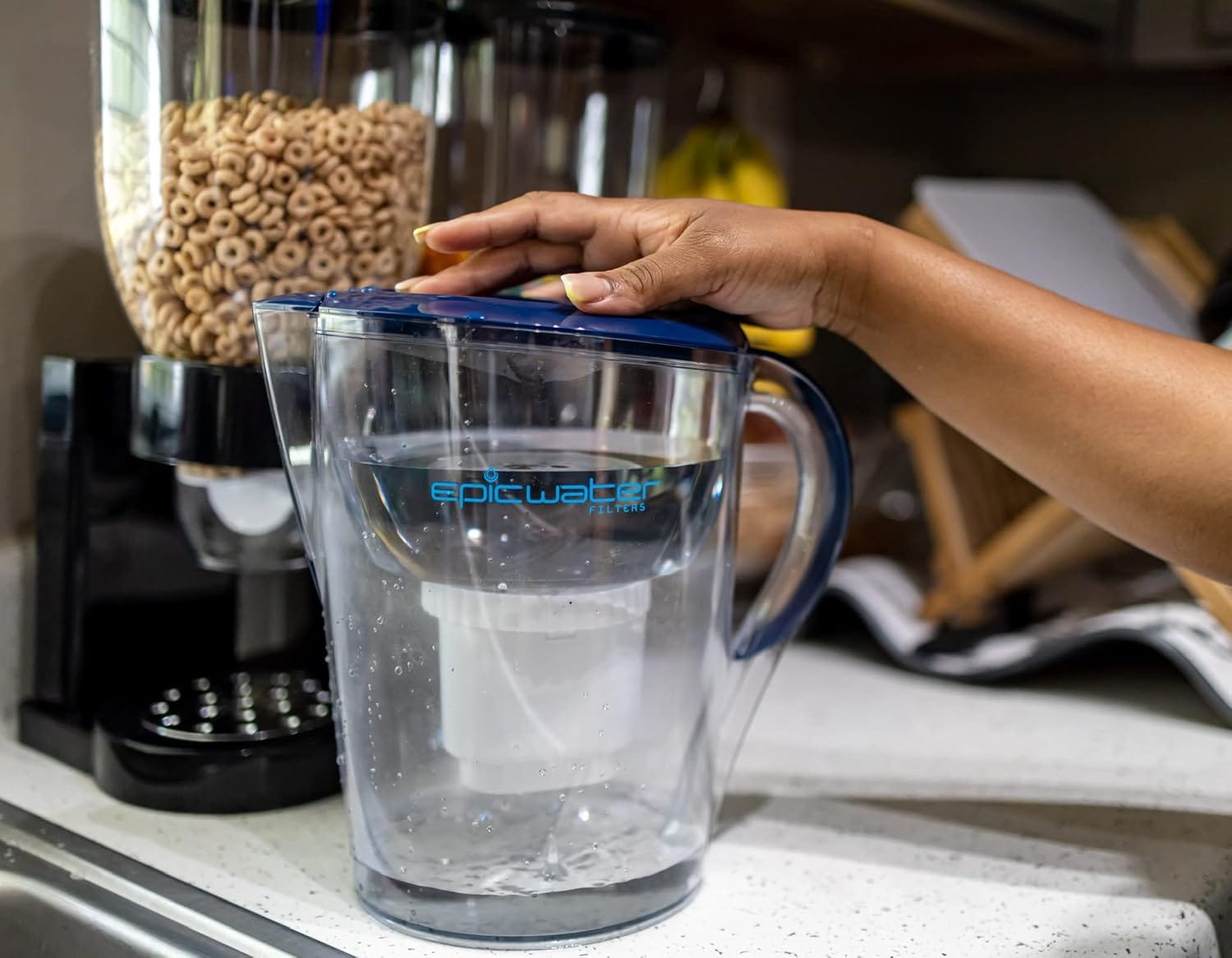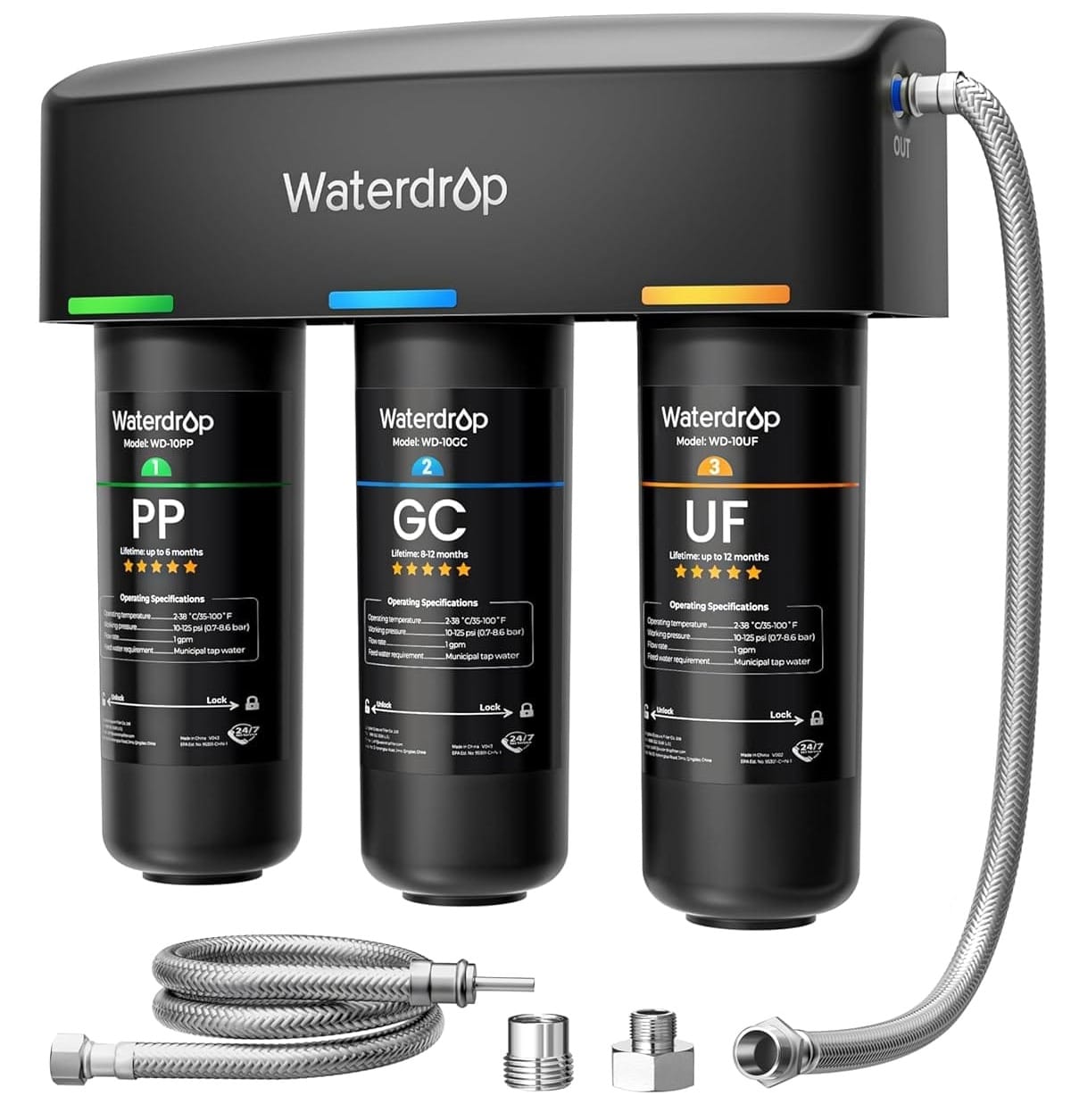Best Water Filters for Microplastics (2025 Guide)
Microplastics are everywhere — even in drinking water. Here’s our evidence-based guide to the best filters to cut exposures at home.

Why Microplastics in Water Matter
In 2017, Orb Media tested bottled water across 9 countries and found microplastics in 93% of samples. Since then, more studies — including the World Health Organization’s 2019 review — have confirmed what many suspected: microplastics are nearly impossible to avoid. They’ve been detected in tap water, bottled water, sea salt, even the air we breathe.
While the health effects are still being studied, researchers have already found microplastics in human blood, lungs, and placentas. The long-term impact is unknown, but many people prefer to reduce unnecessary exposures wherever possible.
The good news: a handful of consumer water filters are certified to reduce or remove microplastics, along with other contaminants. At Baseline, we reviewed the best available products so you can make a simple, effective upgrade.
Our Top Picks
Below are three highly recommended filters that can reduce microplastic exposure. Each option fits a different lifestyle and budget.
1. Berkey Gravity Water Filter

Berkey Gravity Water Filter
Big Berkey Gravity-Fed Stainless Steel Countertop Water Filter System 2.25 Gallon with 2 Authentic Black Berkey Elements BB9-2 Filters
Why we recommend it:
- Large capacity; great for families.
- Removes microplastics, heavy metals, bacteria, and viruses.
- Long filter life reduces ongoing cost.
Pros
- Independent lab testing for broad contaminant removal.
- No plumbing or electricity needed.
- Stainless steel build lasts for years.
Cons
- Higher upfront cost (~$350–$400).
- Slower flow rate than under-sink systems.
2. Epic Pure Water Filter Pitcher

Epic Pure Water Filter Pitcher
Epic Water Filters Pure Filter Pitchers for Drinking Water, 10 Cup 150 Gallon Filter, Tritan BPA Free, Removes Fluoride, Chlorine, Lead, Forever Chemicals
Why we recommend it:
- Affordable entry-point (around $70).
- Certified against NSF/ANSI standards, including 401 for microplastics.
- Easy to keep in the fridge — good for small households.
Pros
- Certified to remove >200 contaminants.
- Simple setup; no tools required.
- Slim profile fits most fridges.
Cons
- Filters need replacement every 3–4 months.
- Slower flow rate vs. gravity or under-sink filters.
3. Waterdrop Under-Sink Filtration System

Waterdrop Under-Sink Filtration System
Waterdrop WD-TSA-UF 0.01 μm Ultra Filtration Under Sink Water Filter, Under Sink Water Filtration System 9 Stage Filtration, Reduces Chlorine, Taste and Odor, Fluoride, Advanced USA Tech
Why we recommend it:
- Permanent solution for daily cooking and drinking water.
- Independent testing shows removal of microplastics, pharmaceuticals, and PFAS.
- Easy one-time installation.
Pros
- Unlimited filtered water at your tap.
- Great taste; removes chlorine and fluoride.
- Long filter life (~1 year).
Cons
- Requires under-sink installation.
- Replacement filters ~$150/year.
Buying Guide: How to Choose a Microplastic Filter
Not all filters are equal. Here are the criteria that matter:
Look for Certifications
- NSF/ANSI 401 → covers microplastics, pharmaceuticals, and emerging contaminants.
- NSF/ANSI 42 & 53 → covers chlorine, taste, lead, and heavy metals.
Filters that only improve taste are not enough. Check for certification labels or independent lab reports.
Consider the Format
- Pitchers → cheapest, portable, but small capacity.
- Gravity filters → larger capacity, good for families, no plumbing.
- Under-sink systems → most convenient long-term; higher upfront install.
Factor in Ongoing Cost
A $60 pitcher with $40 filters every few months can add up faster than a $350 gravity filter with multi-year lifespan. Always check filter replacement schedules and costs.
FAQ: Microplastics and Water Filters
Do Brita filters remove microplastics?
Most Brita filters are not certified for microplastics. They improve taste and remove chlorine but don’t address the smaller particles.
How do I know if my water contains microplastics?
Unfortunately, most municipalities don’t test for them yet. Given how widespread microplastics are, it’s safe to assume they’re present at some level.
Is bottled water safer than filtered tap water?
Not necessarily. Many bottled waters have tested positive for microplastics (Mason et al., 2018). A certified filter is a better investment for consistent reduction.
Everyday Sources of Microplastics
Filters are just one step. Other common sources include:
- Plastic bottles & food containers → switch to glass or stainless.
- Synthetic clothing fibers → consider all natural fibers.
- Non-stick cookware → opt for stainless steel or ceramic.
Baseline will cover all of these in future guides.
Conclusion
No filter can remove every contaminant. But choosing a certified product goes a long way toward reducing unnecessary microplastic exposure. Whether you start with an affordable pitcher, invest in a Berkey, or install an under-sink system, the key is making progress, not perfection.
At Baseline, our mission is simple: reduce modern exposures, reclaim natural resilience.

